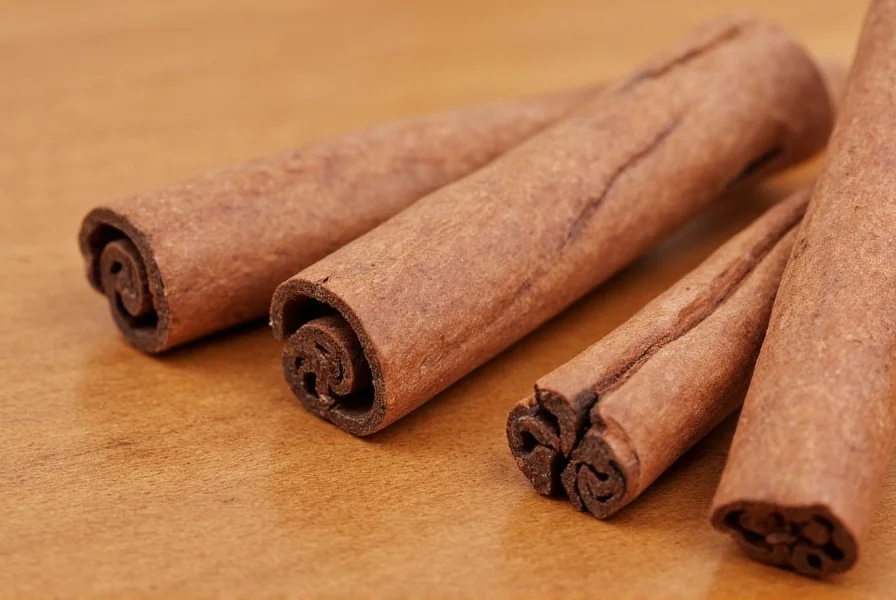For people managing gastroesophageal reflux disease (GERD), understanding which foods and spices affect symptoms is crucial for effective condition management. Cinnamon, a popular spice used worldwide, presents a complex relationship with GERD that requires careful consideration.
The Science Behind Cinnamon and Digestive Health
Cinnamon contains cinnamaldehyde, the compound responsible for its distinctive flavor and aroma. This compound has demonstrated anti-inflammatory and antioxidant properties in laboratory studies. However, these potential benefits must be weighed against cinnamon's physiological effects on the digestive system.
Research published in the Journal of Gastroenterology and Hepatology indicates that certain spices, including cinnamon, can increase gastric acid secretion and potentially relax the lower esophageal sphincter (LES)—the muscular valve that prevents stomach contents from flowing back into the esophagus. When the LES weakens or relaxes inappropriately, it allows acidic stomach contents to reflux, causing the characteristic burning sensation of heartburn.
Cinnamon's Acidity and GERD Triggers
Cinnamon has a pH level between 4-5, making it moderately acidic. For individuals with GERD, consuming acidic substances often exacerbates symptoms. A clinical review in Digestive Diseases and Sciences noted that acidic foods and beverages rank among the most common dietary triggers for GERD flare-ups.
| Spice | pH Level | Common GERD Impact |
|---|---|---|
| Cinnamon | 4.0-5.0 | Frequent trigger |
| Ginger | 5.6-5.9 | Generally well-tolerated |
| Cardamom | 5.8-6.2 | Rarely problematic |
The table above compares common spices and their typical effects on GERD symptoms. While individual responses vary, cinnamon consistently appears as a more problematic spice for acid reflux sufferers compared to alternatives like ginger or cardamom.
Current Research on Cinnamon and GERD
Scientific evidence specifically examining cinnamon's effects on GERD remains limited. A 2022 systematic review in Nutrition Reviews analyzed 15 studies on dietary spices and gastrointestinal health, concluding that "cinnamon demonstrates potential anti-inflammatory effects in vitro, but clinical evidence supporting its use for GERD management is currently insufficient and potentially contradictory due to its sphincter-relaxing properties."
Some preliminary research suggests that cinnamon's anti-inflammatory properties might theoretically benefit digestive health in non-GERD contexts. However, for individuals with existing GERD, the immediate mechanical effects of cinnamon on the LES and gastric acid production typically outweigh any potential long-term benefits.
Practical Guidance for GERD Patients
If you have GERD and wonder about incorporating cinnamon into your diet, consider these evidence-based recommendations:
- Start with minimal amounts - If testing cinnamon tolerance, use no more than 1/8 teaspoon in food
- Avoid cinnamon supplements - Concentrated forms significantly increase risk of symptom exacerbation
- Monitor your response - Keep a detailed food and symptom journal for at least two weeks
- Consider timing - Never consume cinnamon close to bedtime when lying down increases reflux risk
- Choose alternatives - Try gentler spices like fennel or caraway which may actually help digestion

When Cinnamon Might Be Tolerated
Not all GERD patients react negatively to cinnamon. Those with mild, well-controlled GERD may tolerate small amounts when:
- Mixed into substantial meals rather than consumed alone
- Combined with alkaline foods that may neutralize some acidity
- Used in cooked applications rather than raw
- Taken with prescribed acid-reducing medication
However, individuals with erosive esophagitis, Barrett's esophagus, or frequent nighttime symptoms should generally avoid cinnamon completely, as recommended by the American College of Gastroenterology's dietary guidelines.
Consulting Healthcare Professionals
Before making significant dietary changes when managing GERD, consult with a gastroenterologist or registered dietitian specializing in digestive disorders. They can help you develop a personalized approach that considers your specific symptom pattern, disease severity, and overall health status.
Remember that effective GERD management typically requires a comprehensive approach including medication adherence, dietary modifications, weight management if applicable, and lifestyle adjustments—not reliance on single "miracle" foods or spices.
Conclusion
While cinnamon offers potential health benefits in certain contexts, current evidence suggests it's generally problematic for individuals with GERD. The spice's acidity and potential to relax the lower esophageal sphincter make it a common trigger for heartburn and regurgitation. Those managing acid reflux should approach cinnamon with caution, starting with minimal amounts while monitoring symptoms closely. For most GERD patients, especially those with moderate to severe symptoms, avoiding cinnamon represents the safest dietary choice for maintaining symptom control.
Can cinnamon help with acid reflux symptoms?
No, cinnamon typically worsens acid reflux symptoms rather than helping them. While laboratory studies show cinnamon has anti-inflammatory properties, its acidic nature (pH 4-5) and potential to relax the lower esophageal sphincter usually trigger heartburn and regurgitation in people with GERD. Current medical evidence does not support using cinnamon as a treatment for acid reflux.
How much cinnamon is safe to consume with GERD?
Most gastroenterologists recommend avoiding cinnamon completely if you have moderate to severe GERD. For those with mild, well-controlled symptoms who wish to test tolerance, start with no more than 1/8 teaspoon incorporated into a full meal, not taken alone. Always monitor your symptoms carefully for 24-48 hours after consumption and discontinue use if any worsening occurs.
Is cinnamon tea bad for GERD?
Yes, cinnamon tea is generally problematic for GERD sufferers. The brewing process extracts cinnamon's active compounds into the liquid, creating an acidic beverage that can directly irritate the esophagus and relax the lower esophageal sphincter. Even decaffeinated cinnamon teas often trigger symptoms. Those with acid reflux typically tolerate herbal teas like chamomile or slippery elm better.
What spices are safe for GERD instead of cinnamon?
Several gentler spices work well as cinnamon alternatives for GERD patients. Fennel seeds, caraway, turmeric (in moderation), and fresh ginger generally cause fewer issues. Herbs like basil, oregano, and parsley also provide flavor without triggering reflux. When introducing any new spice, start with small amounts and monitor your symptoms, as individual tolerances vary significantly.











 浙公网安备
33010002000092号
浙公网安备
33010002000092号 浙B2-20120091-4
浙B2-20120091-4